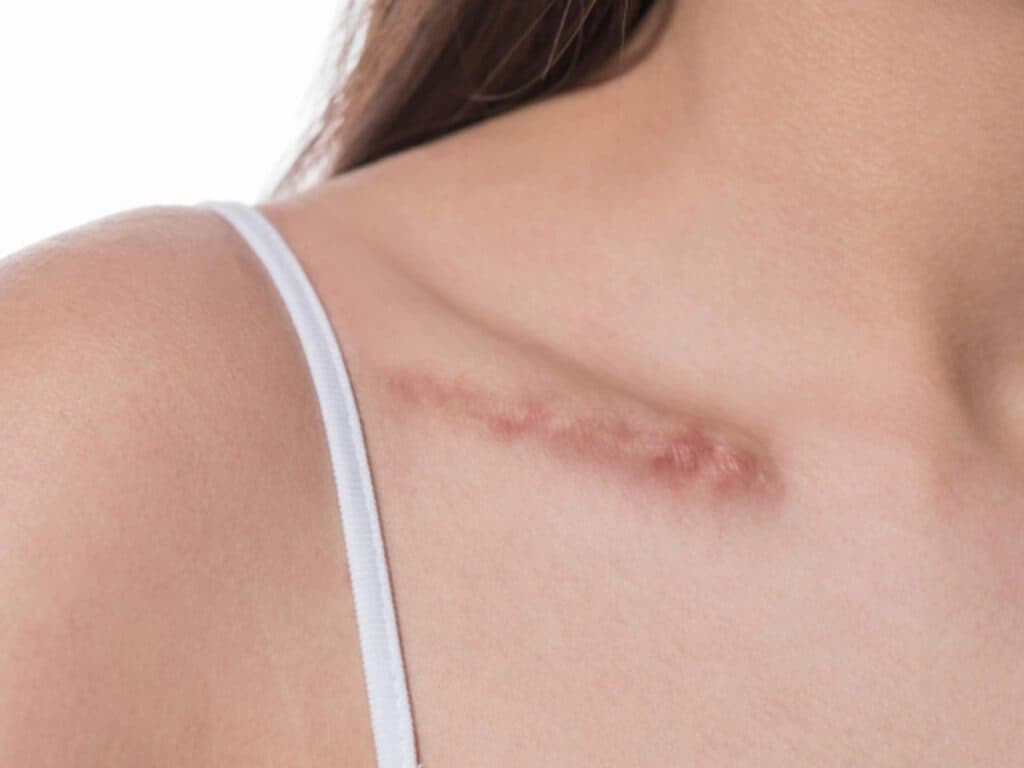SCARS
SCAR REMOVAL TREATMENTS
Scars are permanent patches of fibrous tissue that grows over a wound. Scar removal treatments at 3D Medical Aesthetics combine the latest technology with extensive medical knowledge of our personnel.

SYMPTOMS
Scars often have a thicker texture and appear pinker, or redder, or darker compared to the rest of your skin. They can be painless or painful and can differ in sensitivity and motion flexibility from normal skin. Scars form as your skin works to heal itself after a cut, scrape, burn, or sore. Scars can come from surgery that cuts through the skin, infections like chickenpox, or skin conditions like acne.
CAUSES
When a wound goes into the deeper layers of your skin, cells jump into action and start producing more collagen in an effort to bind your skin back together and protect the area. If your body produces too much collagen, an important healing connective tissue, your scars appear more raised. If your skin doesn’t produce enough collagen, you start developing more sunken scars.
PREVENTION
The scar’s appearance depends on the size, depth, and location of your wound, as well as your age and your tendency to scar. Often, scars become more noticeable as our skin loses collagen. Although scars may fade over time, they never go away completely.
1. LEFT UNTREATED
Like many skin conditions, scars may cause people to feel self-conscious and can lower self-confidence, particularly when in social situations where scars might be on display.
2. SOLUTIONS
If the way a scar looks bothers you, the personalized scar removal treatment at 3D Medical Aesthetics can help to treat or dramatically minimize its appearance. Customizing treatment to each scar type is key for reaching the best results, in a shorter time. For example, a patient who presents with a deep scar in the cheek, may benefit from getting a filler, which adds volume to the skin. This may be followed by chemical peels, or laser treatments that exfoliate the top layer of the skin and stimulate the growth of new collagen fibers in the deeper layer of the skin, the dermis.
Some considerations to avoid surgical/wound scars are:
- Treat injuries immediately
- Keep the injury clean and pay attention to a raised, itchy or red scar
- Allow a cut to breathe to help the skin heel faster
- Do not treat a wound with vitamin E, as it impairs healing
The risk of developing acne scars, on the other hand, is shown to be higher for people who live with acne for an extended amount of time and have a family history of acne. Acne develops when excess oil and dead skin cells build up and plug the opening of a pore. Maintaining consistent skin hygiene, using mineral-based make-up products and acne-friendly skin care products are some basic steps toward reducing acne and your chance of developing acne scars.
How we help you
Discover the treatments we offer to reduce scarring or book an appointment so we can find the perfect solution for you.

Ready for action?
Book an appointment to discuss your treatment with your team and let’s get you ready for enhancing your natural beauty.
14
High quality treatments
250
Returning customers
45
combined years of experience